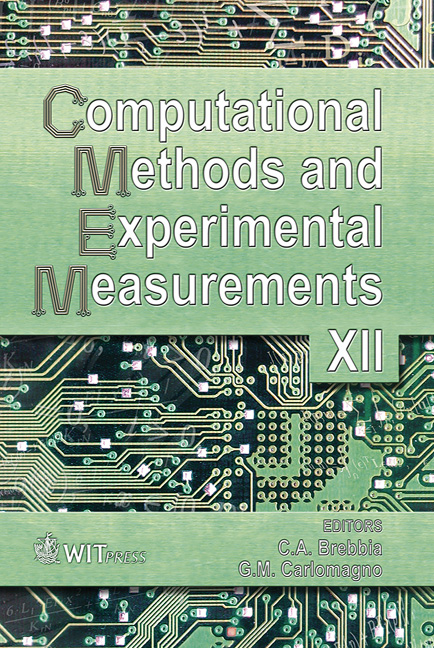Conjugated Heat Transfer In A Package Of Fins
Price
Free (open access)
Transaction
Volume
41
Pages
10
Published
2005
Size
387 kb
Paper DOI
10.2495/CMEM050711
Copyright
WIT Press
Author(s)
A. Lehtinen & R. Karvinen
Abstract
The conjugated convection-conduction heat transfer problem has been solved for a package of fins used in the cooling of electronics. Both laminar and turbulent forced convection flows have been considered. Most of the results published previously have neglected conduction resistance. The solution procedure used in this paper is semi-analytic. The conduction in the fins is assumed to be only in the direction normal to the fin base. The convective heat transfer is modelled assuming fully developed velocity profile in the laminar case and constant heat transfer coefficient in the turbulent case. The conduction in the fluid is neglected in directions parallel to fins. With the above-mentioned simplifications, partial differential equations can be Laplace transformed to obtain an ordinary differential equation. Finally, total heat flux can be achieved by inverse Laplace transforming a resulting series expansion. The results obtained in this paper can be used to obtain optimum plate spacing and corresponding heat flux for a given mass of fin material, pumping power and Prandtl number. The results are compared to existing results for isothermal fins. Keywords: conjugated heat transfer, electronics cooling, forced convection in channels, fin package, plate spacing, optimisation, fixed pumping power. 1 Introduction The basic element in many electronics cooling applications is a rectangular fin package cooled by forced convection, shown in Figure 1. The most important issues for the designer are the optimal fin spacing and the corresponding obtained heat flux. These issues have been explored to some extent by many authors for isothermal or uniform heat flux plates, for example by Bejan and Sciubba [1], Mereu et al. [2] and Campo and Li [3].
Keywords
conjugated heat transfer, electronics cooling, forced convection in channels, fin package, plate spacing, optimisation, fixed pumping power.





